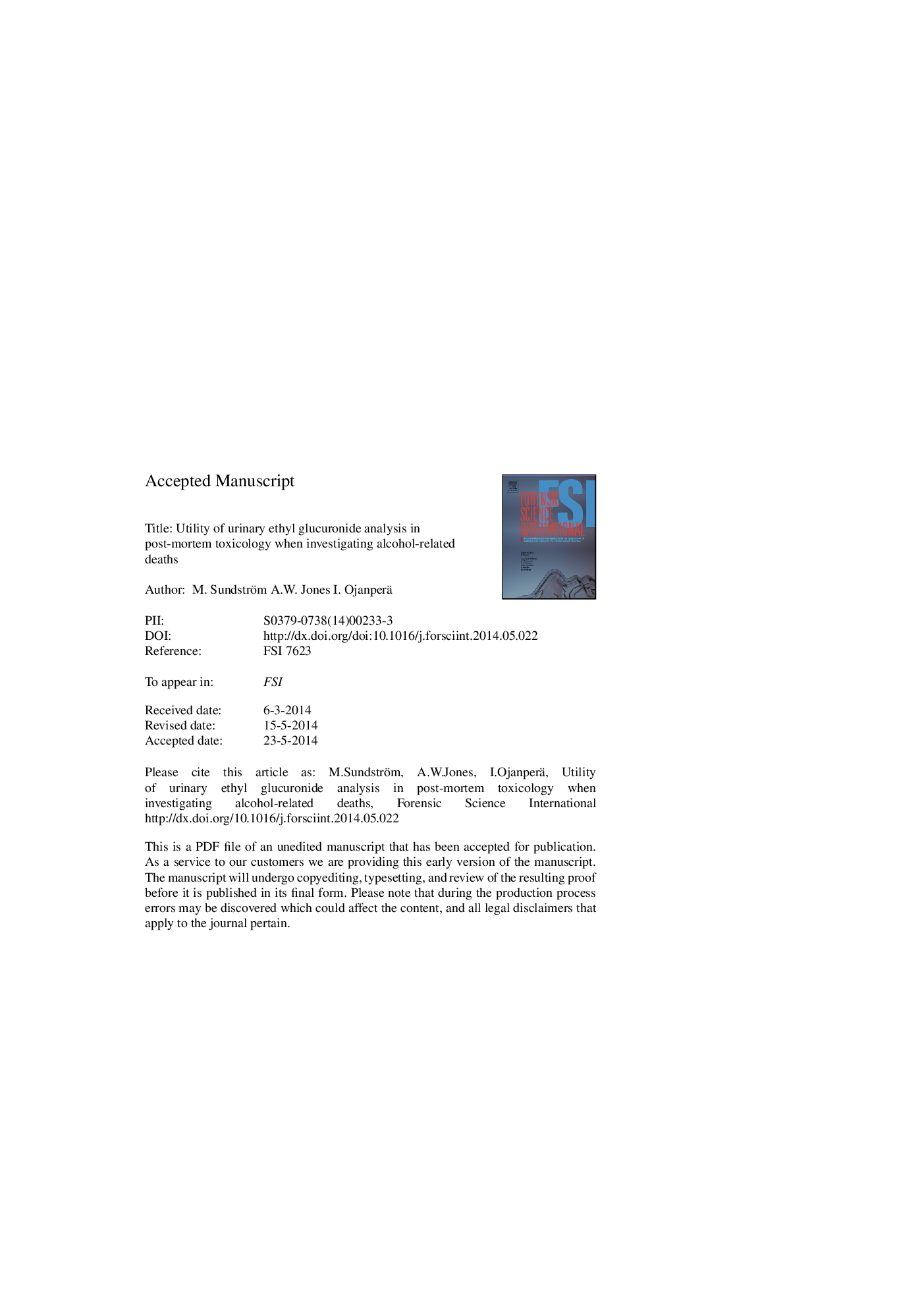| Article ID | Journal | Published Year | Pages | File Type |
|---|---|---|---|---|
| 6552494 | Forensic Science International | 2014 | 15 Pages |
Abstract
Use and abuse of alcohol are common findings when unnatural deaths are investigated as evidenced by high blood- and urine- alcohol concentrations (BAC and UAC) at autopsy. Because ethanol is metabolized in the liver until the time of death, the autopsy BAC or UAC might be negative even though the deceased had consumed alcohol in the immediate ante-mortem period. Analysis of the non-oxidative metabolite of ethanol [ethyl glucuronide (EtG)] offers a more sensitive test of recent drinking. In this paper, we determined the concentrations of ethanol and EtG in urine samples from 972 consecutive forensic autopsies. In 425 cases (44%) both EtG and ethanol were positive, which supports ante-mortem drinking. In 342 cases (35%), both EtG and ethanol was negative, which speaks against any consumption of alcohol just before death. In 181cases, ethanol was negative in urine (<0.2Â g/kg), whereas EtG was positive (>0.5Â mg/L), which points towards ingestion of alcohol some time before death. In these cases, mean and median concentrations of EtG were 53.2Â mg/L and 23.7Â mg/L, respectively, although there was no mention of alcohol on 131 of the death certificates. Alcohol was mentioned on death certificates as an underlying or immediate cause of death or a contributing factor in 435 (45%) cases, which rose to 566 (58%) cases when positive EtG results were included. This article demonstrates the usefulness of EtG analysis in routine post-mortem toxicology when ante-mortem drinking and alcohol-related deaths are investigated.
Related Topics
Physical Sciences and Engineering
Chemistry
Analytical Chemistry
Authors
M. Sundström, A.W. Jones, I. Ojanperä,
